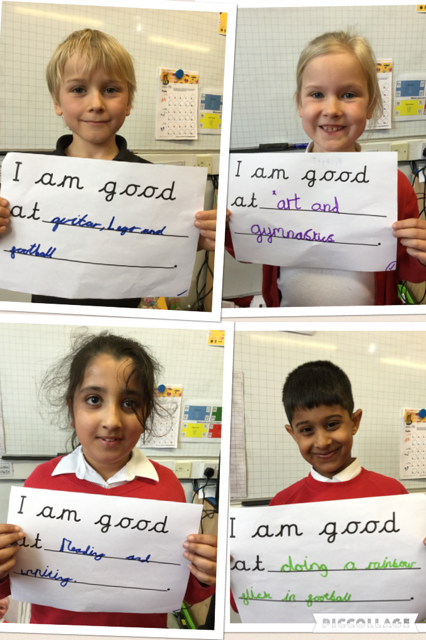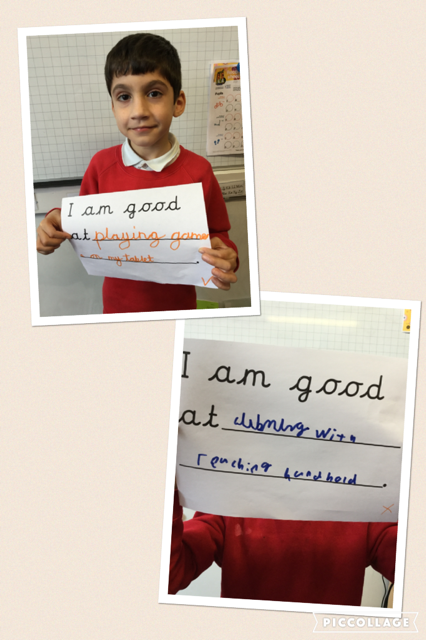Living and Learning
This week’s Living and Learning statement is – I use good table manners.
On Monday Year Three discussed what makes good table manners.
Amrit stated, “You shouldn’t use electronics at the table because if you’re holding something else you may not be holding your knife and fork properly.”
Lewis reported, “You should always use your knife and fork properly unless it is finger food like a sandwich.”
Christina replied: “Never burp at the table because it is very rude. If you really need to burp then say excuse me and cover your mouth.”
“You could also say pardon me.” Added Ashton.
Sam explained, “If you want to get something that’s on the table you should ask for it to be passed to you rather than reaching across the table.”
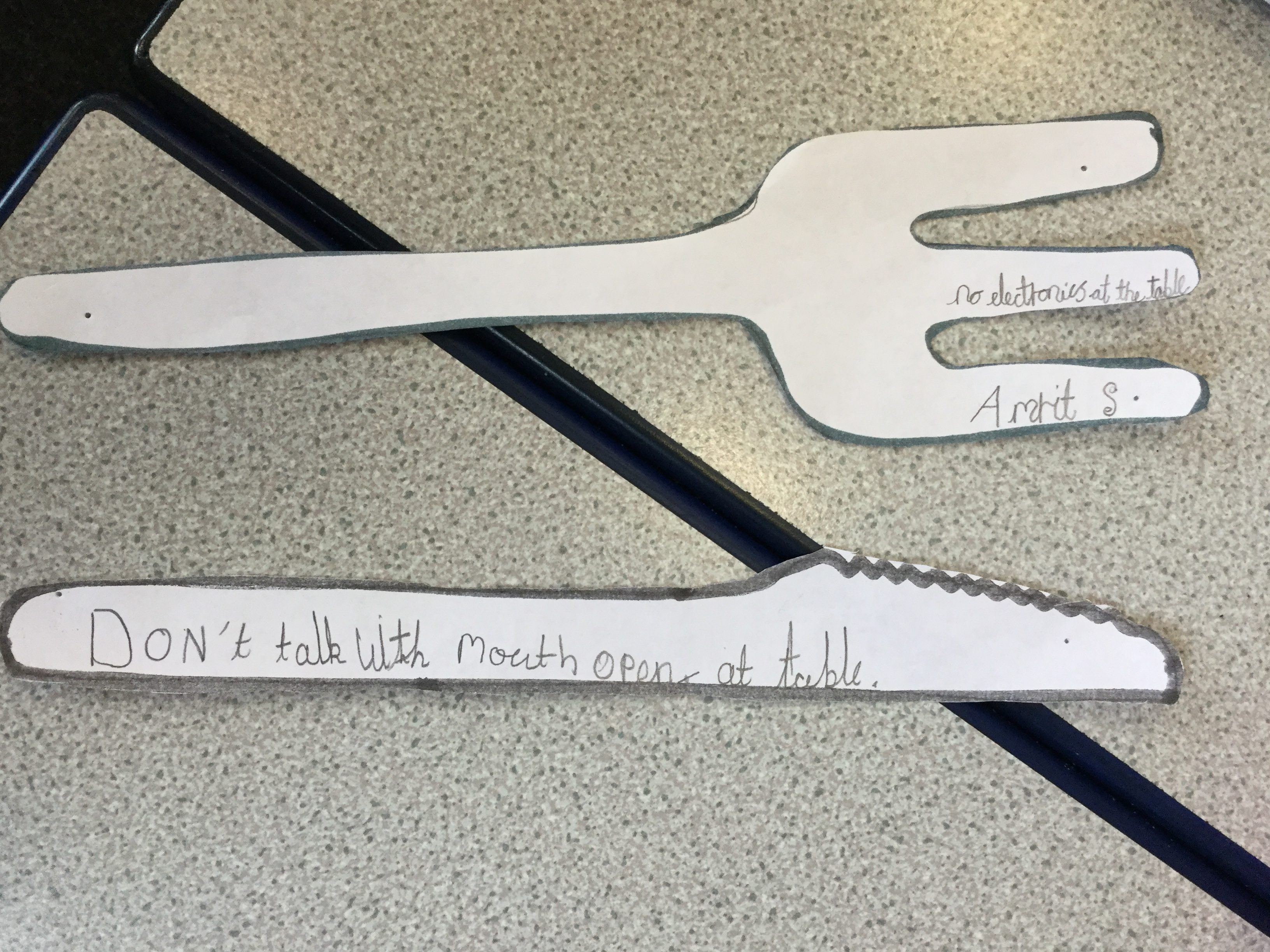
Reading and Writing
Following on from our recent production, Year Three are looking at Jack and the Beanstalk in Reading and Writing for the next few days.
We have started by retelling the story and summarising it.
“A summary is when you tell someone else what happened in the story but only the main parts as you leave out the bits that aren’t that important.” Billy explained.
We summarised the story by using story maps.
The Arabic Alphabet
After Miss Wilson’s trip in the Easter holidays where she learnt about the Arabic alphabet (albeit a very condensed version), Year 5 were challenged to write their name in Arabic!
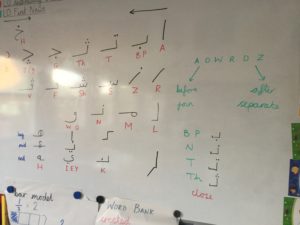
Luckily for Miss Wilson, lots of children in Year 5 can speak or are familiar with the language so they were on standby, ready to help with pronunciation or letter names. (Thanks, Nayaab!)
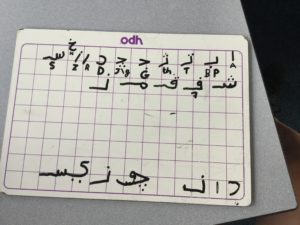
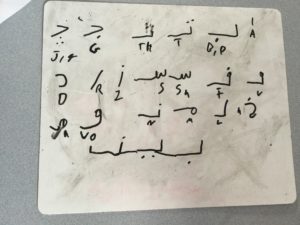
“It was cool to do some Arabic at school!” said Darien.
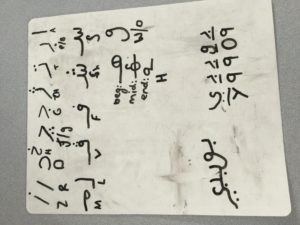
It was great to hear about the eventful or relaxing breaks the children had! Welcome back, everyone.
Living and Learning: Healthy Minds
- 15 April I use good table manners. Think about good table manners at home – not pointing our cutlery at someone or speaking with food in our mouths, for example.
- 22 April I recognise emotions in myself and others. Recognising emotions is an important first step in helping us manage our emotions. For example, it’s ok to feel angry, as long as we try to manage it in a way that doesn’t negatively affect other people. It’s great to feel proud as long as it doesn’t lead to showing off. Being aware of different emotions – both positive and negative – is an important basis for good mental health.
- 29 April I recognise mental health is important. Increasingly, we hear about the importance of mental health. Talk at home about different ways to help mental health. This might include restricting screen time, getting enough sleep, and taking time – even just five minutes – as a family to relax and recuperate after a busy day.
- 07 May I can describe and use ways to calm down. We all get worked up from time to time – how do different people calm down? We’ll explore different strategies to calm down, and encourage our children to adopt one or two of these. These may be some of the mindfulness techniques children have been taught or counting to ten, going for a walk, getting a glass of water – discuss what works for you and your child?
- 13 May I recognise the importance of money. In the final week of the half term, we have the second themed week of the year: a money-related week. This Living and Learning statement helps to introduce the week.
- 20 May I make choices about my money. Linked to the Money Matters themed week, we’ll explore different choices: to spend or to save, for example.
The topic of mental health can be introduced to children through this text.

Discovery Zone at Leeds University
Year 6 had a great morning at Leeds University in our final week of the Spring Term. Each and every one of them got stuck in to a whole host of scientific investigations, finding out loads along the way.
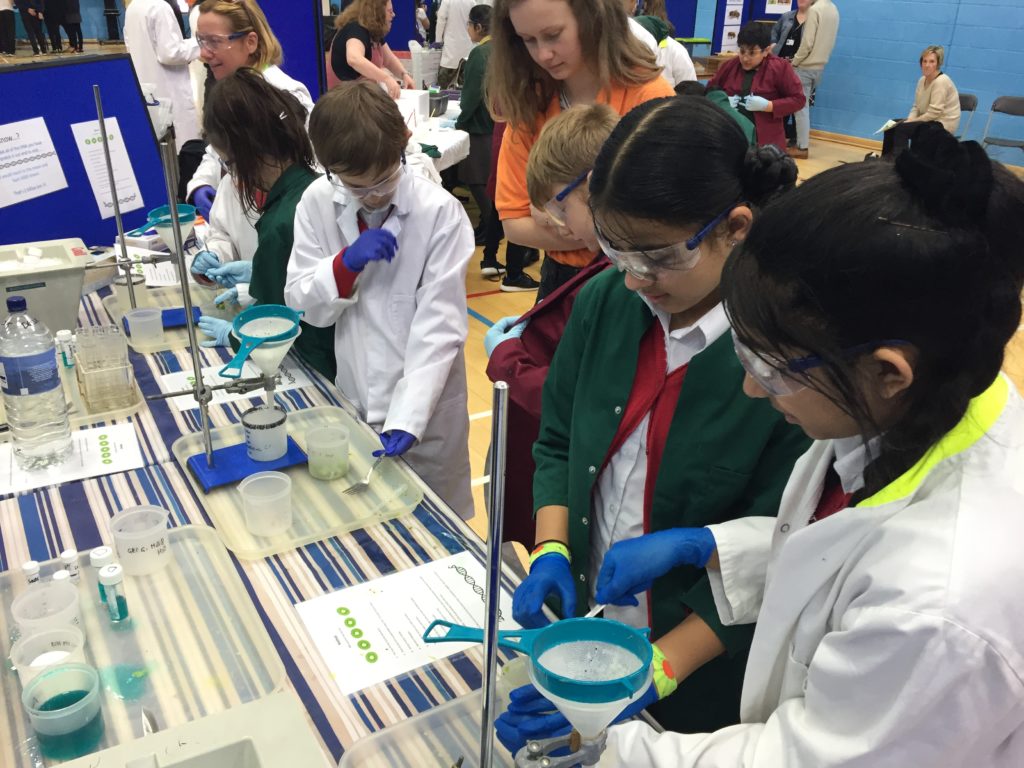

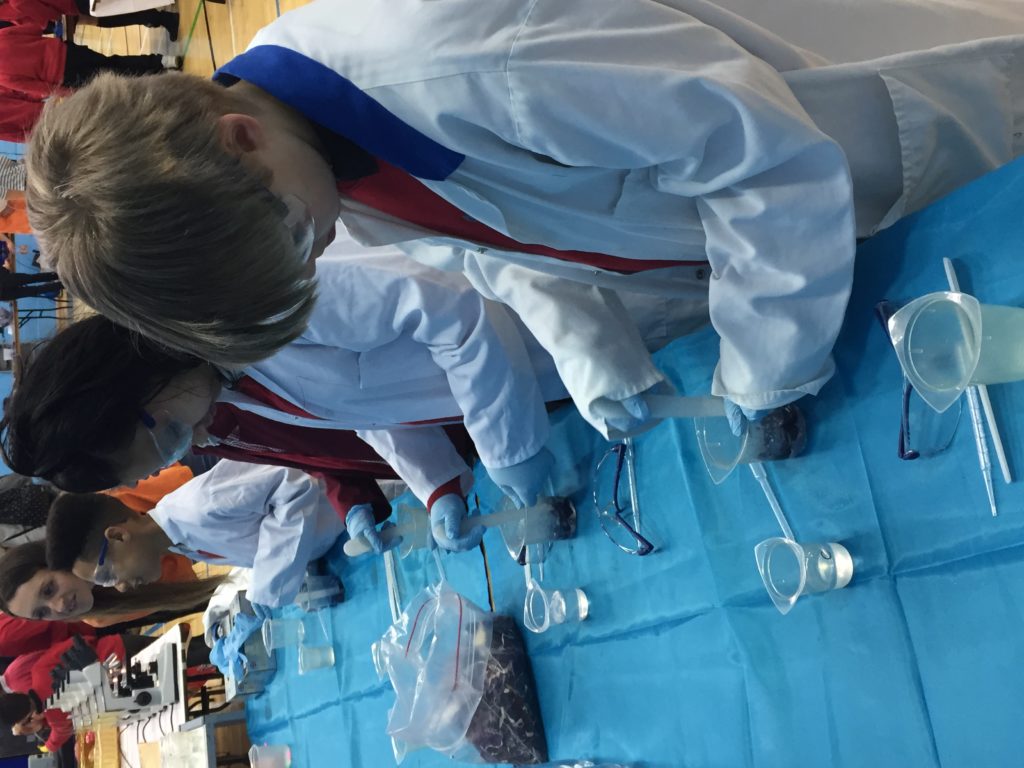
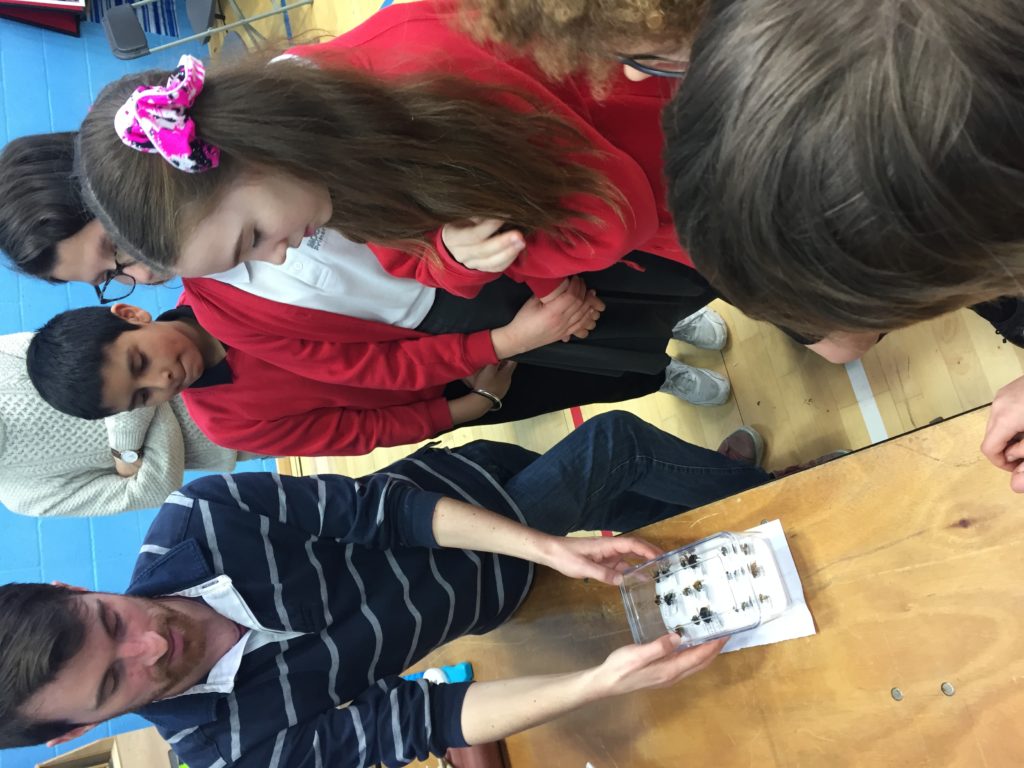
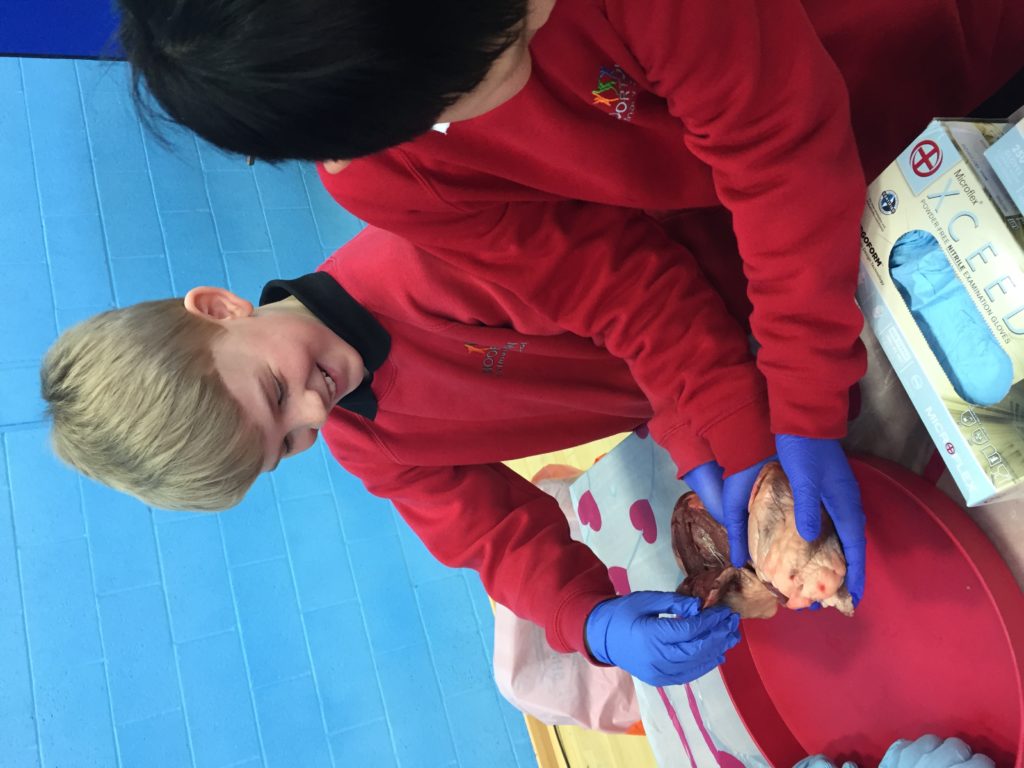
Living and Learning: First News – body image
What is body image?
Body image describes our idea of how our body looks and how we think it is perceived by others. This can include our thoughts and feelings about our height, weight, shape, skin, colour and our appearance.
During our Living and Learning session this week, Year 4 discussed connections between advertising and body image.
We thought about how advertising can be creative and filled with ideas that come alive with drama, excitement and humour. However, this commercial messaging can have a negative impact on how we see ourselves.
Should we compare ourselves to what we see in advertisements?
No because we are all different.
No one looks the same.
It is important that pupils are media literate to help them to better understand advertising and its influences on sensitive subjects such as body image
Each week, the latest edition of the ‘First News’ newspaper is enjoyed by lots of classes across school. This child friendly paper is a great resource for exploring UK and international news stories.
 The paper covers politics to entertainment, sports to science and everything in between. Year 4 regularly enjoy reading the latest stories. This valuable resource provides the children with an accessible way to understand the world. It enriches their wordly knowledge, encourages curiosity and builds confidence in sharing ideas and opinions.
The paper covers politics to entertainment, sports to science and everything in between. Year 4 regularly enjoy reading the latest stories. This valuable resource provides the children with an accessible way to understand the world. It enriches their wordly knowledge, encourages curiosity and builds confidence in sharing ideas and opinions.
This week , Year 4 shared an article that linked well to out Living and Learning focus: body image.
A young girl from Norfolk, featured in a stunning photo exhibition about a rare skin condition.
She said: “I know I look different to other children but my birthmark has never really bothered me, it’s just a small part of who I am.
The photo series, called, How Do You C Me Now?, promotes the message ‘love the skin you’re in’ and is a celebration of difference. The children had discussions with each other about this story. Following that, we all shared our thoughts together. 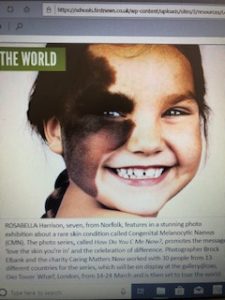
She has a beautiful face.
It doesn’t matter what you look like. It is ‘what’s inside’ that is important.
We shouldn’t make judgements.
We then discussed possible reasons for the girl in the picture to want to take part in an exibition.
To show people that body image shouldn’t be something to be ashamed of.
She is brave and wants to celebrate differences.
Maybe she has been bullied about the way she looks.
The girl isn’t worried about how she looks. More people should be aware.
She may have to deal with negative comments from strangers or children at school.
She isn’t embarrassed about looking different. She wants to celebrate it.
Living and Learning – Body Image
This half term, Y5 have been learning about why it’s good to be us. We also learnt about body image.
We watched a shocking video which showed the extensive airbrushing models undertake and discussed why this is damaging! Ask your child to explain why.
Advertising is all around us. It’s for everybody and should be representative of everybody. We watched some clips of more empowering advertising that might make people feel better about their body image.
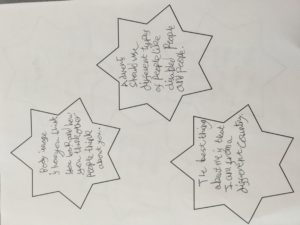
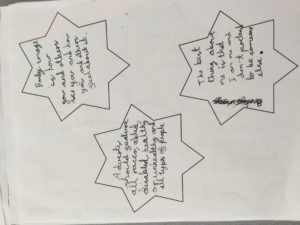
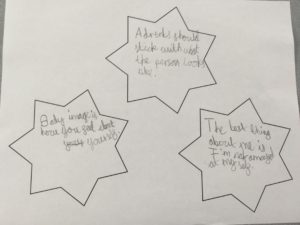
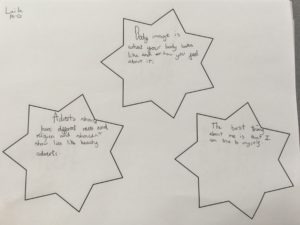
Well done to all!
A huge well done to all the children for their recent production ‘Fee Fi Fo Fum.’
We have had many compliments regarding the performance.
The children’s production last night was fantastic, I laughed so hard. I cannot believe how they knew all those songs by heart, just goes to show they are like sponges at that age!
This was possibly the best show I have seen at Moortown.
We loved the jokes.
All the cast looked like their were having such a great time!
Songs were fantastic.
Many thanks for helping us out with the costumes and well done to the staff for sorting all the props.
Big Pedal
Thank you to all families who have taken part in the Big Pedal this week by making an active journey to school – the weather has certainly helped.
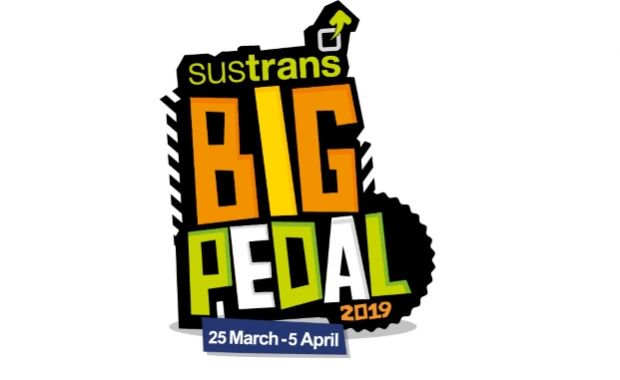
In some pupil interviews this week, one of the unsafe places around school that was quoted by a child was, ‘outside the school gates if there are lots of cars stopping’. Travelling actively not only supports our physical and mental health but keeps cars away from outside school making our pupils and families safer on their journey to school.
It’s the final day of the Big Pedal tomorrow so let’s hope we can keep our participation rate as high. After day 3, we are 83rd out of 500 schools taking part in the small primary school category.
Living and learning: Body Image
For the last part of this half term, our living and learning lessons have been focusing on body image.
- their own identity
- what makes them unique
- looking at their appearance
- appreciating their own unique facial appearance
- recognising that differences between us are not just related to appearance
- knowing more about themselves
- accepting and valuing their own abilities
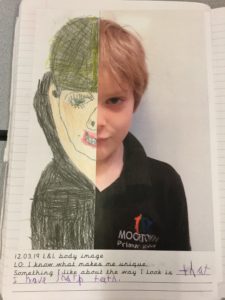


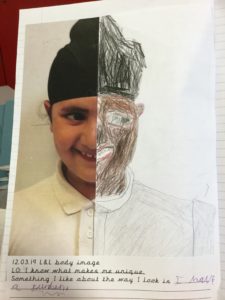
Whenever we take photos of the children for the website, as well as having parental consent (permission), we always ask for the children’s consent to do this too. To reinforce this understanding of giving consent, all the children were asked to put a tick if they gave their consent to have their photo taken with their learning or a cross if they did not. They had the right to say no. As you can see below, one child didn’t give their consent to having their photo taken this time.



